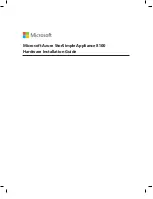
You can run this task directly from the command line by typing the following command:
diag -d
device
-T"identifyRemove"
. However, note that some devices support both the
PCI Hot-Plug task and the RAID Hot-Plug Devices task. If this is the case for the
device
specified, the Hot-Plug Task displays instead of the PCI Hot Plug Manager menu.
For more detailed information concerning PCI Hot-Plug Manager, refer to the
AIX
System Management Guide: Operating System and Devices.
SCSI Hot Swap Manager
This task allows the user to identify, add, remove, and replace a SCSI device in a
system unit that uses a SCSI Enclosure Services (SES) device. The following functions
are available:
v
List the SES Devices
v
Identify a Device Attached to an SES Device
v
Attach a Device to an SES Device
v
Replace/Remove a Device Attached to an SES Device
v
Configure Added/Replaced Devices
The List the SES Devices function lists all the SCSI hot-swap slots and their contents.
Status information about each slot is also available. The status information available
includes the slot number, device name, whether the slot is populated and configured,
and location.
The Identify a Device Attached to an SES Device function is used to help identify the
location of a device attached to a SES device. This function lists all the slots that
support hot swap that are occupied or empty. When a slot is selected for identification,
the visual indicator for the slot is set to the Identify state.
The Attach a Device to an SES Device function lists all empty hot-swap slots that are
available for the insertion of a new device. After a slot is selected, the power is
removed. If available, the visual indicator for the selected slot is set to the Remove
state. After the device is added, the visual indicator for the selected slot is set to the
Normal state, and power is restored.
The Replace/Remove a Device Attached to an SES Device function lists all
populated hot-swap slots that are available for removal or replacement of the devices.
After a slot is selected, the device populating that slot is Unconfigured; then the power
is removed from that slot. If the Unconfigure operation fails, it is possible that the device
is in use by another application. In this case, the customer or system administrator must
be notified to deactivate the device. If the Unconfigure operation is successful, the
visual indicator for the selected slot is set to the Remove state. After the device is
removed or replaced, the visual indicator, if available for the selected slot, is set to the
Normal state, and power is restored.
Note: Before you remove a device, be sure that no other host is using it.
Chapter 6. Introducing Tasks and Service Aids
107
Summary of Contents for Eserver pSeries 670
Page 1: ...pSeries 670 User s Guide SA38 0614 00 ERserver IBM...
Page 2: ......
Page 3: ...pSeries 670 User s Guide SA38 0614 00 ERserver IBM...
Page 14: ...xii Eserver pSeries 670 User s Guide...
Page 22: ...6 Eserver pSeries 670 User s Guide...
Page 28: ...12 Eserver pSeries 670 User s Guide...
Page 88: ...72 Eserver pSeries 670 User s Guide...
Page 136: ...120 Eserver pSeries 670 User s Guide...
Page 150: ...134 Eserver pSeries 670 User s Guide...
Page 154: ...138 Eserver pSeries 670 User s Guide...
Page 158: ...142 Eserver pSeries 670 User s Guide...
Page 188: ...172 Eserver pSeries 670 User s Guide...
Page 194: ...178 Eserver pSeries 670 User s Guide...
Page 197: ......
















































